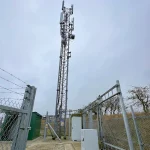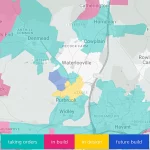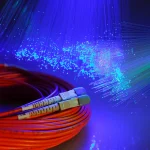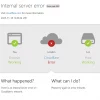FTTH Council EU Issue Open Letter Calling for End to Fake Fibre Ads UPDATE
The President of the FTTH Council Europe, Ronan Kelly, has published a new open letter to EU telecoms ministers, which calls on them to stop “misleading fibre advertising” by UK and EU broadband ISPs that offer hybrid fibre services (e.g. FTTC); these are often significantly slower and less reliable than “full fibre” (FTTH).
Pure fibre optic ISPs (e.g. Fibre-to-the-Premises) run their optical fibre cables all the way to your doorstep, which use laser light to deliver significantly faster speeds (e.g. multi-Gigabit) and a much more reliable service. By comparison hybrid fibre solutions often add metallic (copper or aluminium) cables that can suffer from serious signal degradation over distance, dramatically restricting performances.
However hybrid fibre ISPs have continued to make a habit out of promoting themselves as “fibre“, “fibre optic” or “fibre broadband” providers, which the new generation of full fibre providers view as being confusing for consumers. This issue didn’t matter so much when FTTP ISPs were still niche but today they’re the fastest growing network type.
Advertisement
Various Telecoms Ministers are due to meet tomorrow for the next ‘Transport, Telecommunications and Energy Council Meeting‘, which among other things will adopt the new European Electronic Communications Code (details). In response the FTTH Council Europe has penned the following letter to them.
Open Letter by the FTTH Council Europe
As Telecoms Ministers are gathered in Brussels to adopt the new European Electronic Communications Code, the FTTH Council Europe highlights that misleading fibre advertising risks undermining its key objectives of incentivising Very High Capacity Network investments and empowering consumers in a transparent manner.
According to the new Code, National Regulatory Authorities will have to consider 4 objectives when implementing the legislation: promoting competition, the internal market, end-users’ benefits as well as connectivity, access to and take-up of Very High Capacity Networks by all EU citizens and businesses.
We are witnessing “fake fibre” advertising practices in several Member States using “fibre” or “fibre speeds” in advertisements for copper-based broadband, when the advertised product is not genuinely based on a full fibre connection.
First of all, a consumer thinking they already have full fibre will never switch to a FTTH connection. Misusing the word fibre in advertisements prevents the consumers from making an informed choice about the products which are available to them and risks hindering fibre take-up.
There is growing evidence that consumers are largely unaware of the form of internet connectivity they have bought, oftentimes due to the associated advertising. A survey conducted in the UK [by Cityfibre] has shown that almost a quarter (24%) of the respondents think they already have fibre cables running all the way to their home (fibre-to-the-premises), despite this was only available to 3% of UK properties.
Where consumers know what they can choose from and understand the difference in performance between fibre and copper-based connections, they consciously choose fibre: the degree of satisfaction of FTTH end-users is substantially higher than recorded for any other Internet access technology in Sweden and 94% of non-FTTH users would consider subscribing to FTTH if it was made available in their area.
Secondly, another study found that “such large differences between what is being promised and what is being delivered could actively suppress the demand for fibre as copper-based access may be wrongly perceived to provide similar services”. Selling inferior copper-based connections as fibre undermines the value proposition of real fibre and undercuts the investment case for full fibre deployment.
We are firmly convinced that the proper use of the word fibre in advertisements would empower consumers to make an informed choice and in turn have a beneficial effect on the take-up of Very High Capacity Networks, which is vital for investments in new fibre networks.
This issue has already been identified in several Member States and as the problems of FTTH demand suppression continue, a number of individual countries are leading the way by moving specific legislation to limit the use of FTTH, Full-Fibre and other fibre related terms in advertising. In Italy for example, the regulator requires that the term fibre is only used when marketing fibre to the home (FTTH) or fibre to the building (FTTB) services and requires operators to use an easily understandable traffic light system in their communications to consumers. The FTTH Council Europe is convinced that this action will prove to be a very powerful tool in unlocking investment in full fibre rollout and advocate for a more consistent and European approach to this issue.
We believe that fibre is the only future-proof foundation enabling fixed and wireless Gigabit networks as well as all new innovative digital technologies and services. Acting on misleading fibre advertising is in the interest of all European citizens and businesses but is also in the interest of Europe’s global digital competitiveness and sustainability.
Therefore we urge Member States, National Regulatory Authorities and BEREC to take action both individually and collectively to prevent misleading fibre advertising. This will contribute to unlocking the investment potential in fibre across Europe as well as to ensuring that consumers can make well informed choices based on genuine, transparent information.
We remain at your disposal to provide any further inputs or details.
Yours sincerely,
Ronan Kelly
FTTH Council Europe President
In the UK it’s Cityfibre that has been fighting for a Judicial Review of the Advertising Standards Authority’s (ASA) current position (here), which allows slower hybrid fibre (FTTC etc.) ISPs to promote their services as “fibre optic” (a decision on this is due soon). However we should correct the council in that at present 5% of the UK can access a “full fibre” service (latest Ofcom data), not 3%.
One other thing worth mentioning is that Italy still allows FTTB services to be advertised like FTTP, which is despite the fact that such deployments often still involve a small amount of copper cable (usually higher capacity Ethernet cables and only inside the building). In the practical sense these can still deliver Gigabit speeds, although it does muddy the water.
Meanwhile DOCSIS based Hybrid Fibre Coax (HFC) dominated cable networks, such as Virgin Media in the UK, might well argue that their network will also be able to deliver Gigabit speeds (at least for downloads) once the new DOCSIS 3.1 upgrade is introduced. Heck in an ideal FTTdp style setup even G.fast could deliver Gigabit performance, although at present there seems to be no chance of that on Openreach’s (BT) network.
Advertisement
Whether or not any of this will have an impact on the EU Telecoms Ministers remains to be seen, although they tend to leave issues of advertising up to individual member states (currently this still includes the UK).
UPDATE 12:11pm
Cityfibre has issued the following comment.
Greg Mesch, CEO at CityFibre, said:
“We welcome today’s demand for change from the FTTH Council as, without a new approach to the advertising rules for full fibre broadband, the UK will continue to lag behind other European countries that have already sorted this issue out.
UK regulators must act now to avoid progress being held back any further. This is a serious barrier to innovation and investment that affects not only the rights of consumers, but the future growth and competitiveness of the UK economy.”
UPDATE 4:34pm
Advertisement
Rural fibre optic ISP TrueSpeed has also commented.
Evan Wienburg, Founder and CEO of TrueSpeed, said:
“We supported CityFibre’s efforts to challenge the ASA’s position regarding partial-fibre advertising nine months ago, and we welcome any further efforts to stop broadband providers from misleading consumers in order to sell them inferior products that will ultimately leave them in the digital slow lane.
Our industry is beset with jargon and complexity – a scenario that should serve as a rallying call for providers to introduce greater simplicity and promote customer education. Sadly, too many parties are more interested in obfuscation and consumer confusion, on the basis that it might help them make a quick buck before customers realise they’ve been short-changed.”
UPDATE 4th Dec 2018
We’ve added a response from KCOM.
Sean Royce, KCOM’s MD, said:
“We strongly back the FTTH Council Europe’s demands to clamp down on misleading advertising which portrays FTTC broadband as full fibre. It must be very confusing for customers who think they’re getting a full fibre service when, in reality, their broadband is limping the last leg of its journey to the home on old copper wiring.
To be able to advertise this as fibre is frankly wrong. At KCOM, we have invested heavily in rolling out true full fibre broadband which is now providing our customers with Gigabit speeds.
When other providers are able to promote their inferior half copper services as fibre broadband it undermines the value of what investors in FTTH are achieving and the quality of the product – and it may put off other ISPs investing in this much needed technology. This can only be bad for the UK PLC which could be left trailing in the slow lane behind other advanced economies and damage our reputation as a leading tech nation.”
Mark is a professional technology writer, IT consultant and computer engineer from Dorset (England), he also founded ISPreview in 1999 and enjoys analysing the latest telecoms and broadband developments. Find me on X (Twitter), Mastodon, Facebook, BlueSky, Threads.net and Linkedin.
« Ofcom Accused of Ignoring SME Overcharging by UK Mobile Operators UPDATE

















































Comments are closed